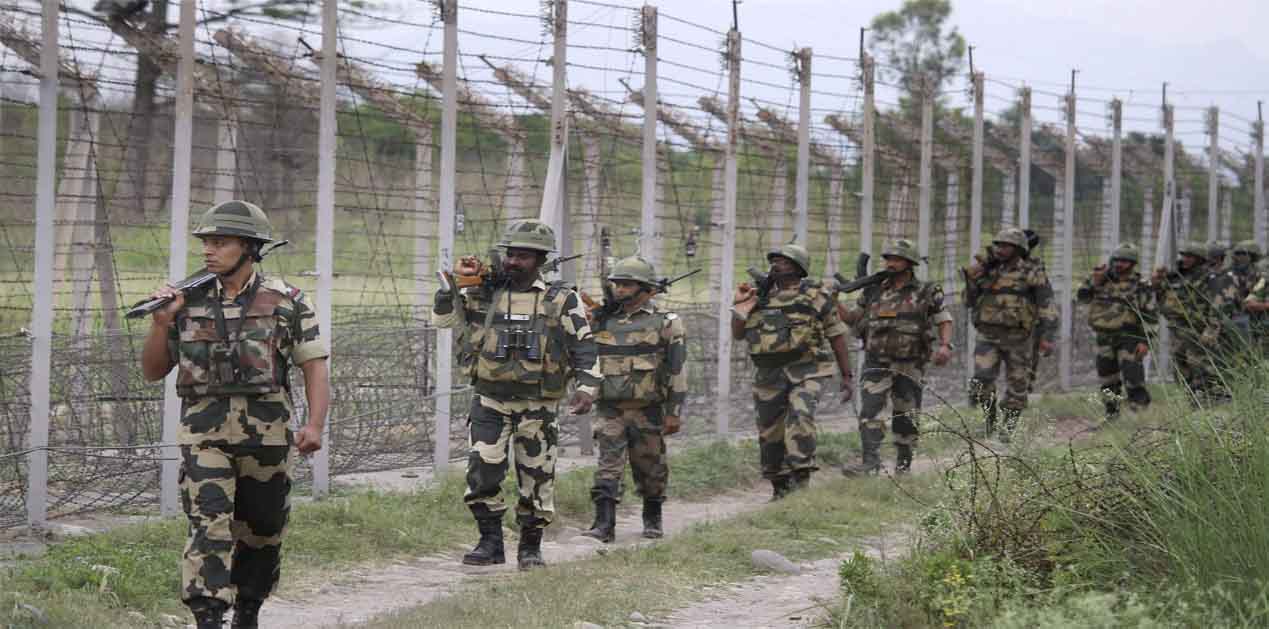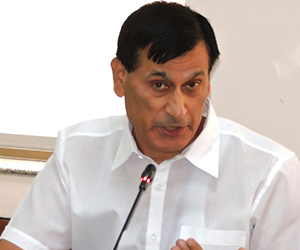Globalisation has not just raised the aspirations of people, but has also rocked the very sovereignty of the established Westphalian nation states. As countries are developing capacities to enforce their territorial boundaries, people staying close to the international borders are losing their traditional ways of livelihood. Hence fences, immigration laws and customs acts are increasingly infringing upon their daily way of life that has been prevalent from the eons past. Consequently, demand for open traffic rights and free trade across the borders have started to gain traction in national politics and international media. However, countries in the neighbourhood are but obviously sceptical about these demands for the fear of being dumped with cheap Chinese goods. Festering inter-ethnic conflicts further add to the apprehensions of these governments. Nonetheless, there is greater realisation today on the importance of rekindling the cultural ties and enhancing the regional connectivity in Asia by the way of road, rail and sea. Besides, increase in legal commercial traffic promises the reduction in illegal trade along with the concomitant payoff of boosting local tourism.
Cross border ‘Haats’ have emerged as hubs of regional exchange, integrating people, enmeshing local economies and facilitating cultural interactions. Haats at Dawky in Meghalaya and Agartala are already operative on the Indo-Bangladesh border. Forty more Border Haats on the Indo-Bangladesh border are to open shortly. Declaration by Sheikh Hasina to open Chittagong and Mongla ports to our Kolkata and Haldia ports has further spurred these developments. Bridges over River Feni are to connect Chittagong and Agartala. A second bridge over River Meghna will have much larger impact on increasing trade between both the countries. Swapping of the enclaves between India and Bangladesh in 2015 had solved a long standing stalemate on security and demographic problems along North Bengal and Assam borders. With this, the adverse land possession cases that had tormented the border-guarding forces, has now been put to rest in perpetuity.
The Indo-Bangladesh Border is not an open border. Yet we had penetration of Bangladesh migrants from 1971-1974 after the Indo-Pak War and again from 1975-1977 after Sheikh Muzibur Rahman was assassinated; a third penetration was after the demolition of Babri Masjid at Ayodhya. Many demographic changes have occurred along the border districts of India and Bangladesh, particularly in North 24 Paraganas, Nadia, Murshidabad, Malda, Goalpara, Dhubri, Karim Ganj and Silchar. Nevertheless, the present Government under Sheikh Hasina has most cordial relations with India. With help of Border Guards of Bangladesh and Rapid Action Battalions, all Indian and Bangladesh militant camps opposite our border were permanently removed and the security agencies of Bangladesh and India are working together to apprehend Jammat-ul-Mujaheedeen of Bangladesh (JuMB), Islamic Chhatra Shibir (ICB) and Ansarullah Taliban of Bangladesh (ATB) cadres hiding in India, particularly in West Bengal, Assam and Meghalaya.
India needs to enhance surveillance along the border to clamp down on illegal trafficking of drugs, human and arms. Kolkata, Delhi and Bombay are known to be transit ports for Bangladeshi and Nepalese girls being sent to Middle East for sex trade. With the support of Jamaat-e-Islami-Bangladesh (JeIB) and Harkat-ul-Jihad-al-Islami (HuJI), Rohingyas are believed to be indulging in narcotics and human trafficking, illegal trade of small arms and ammunitions, smuggling and illegal cross border infiltrations. Besides, Lashkar-e-Taiba (LeT) is known to have radicalised Rohingyas to wage war against India, which is a threat to both India and Bangladesh.
Porous international borders are being exploited by Inter-Services Intelligence (ISI) of Pakistan, Islamic State of Iraq & Syria (ISIS or IS) and secessionist elements to destabilise India and its neighbours. ISI operatives are also active in the North East and are funding Peoples United Liberated Front (PULF) and Muslim United Liberation Tigers of Assam (MULTA) to cause communal disturbances. Even the IS, with support of local extremist groups like JuMB and ATB are flexing muscles in Bangladesh and West Bengal. ISI is also known to be planning to attack Hindu temples and minority groups in Bangladesh with the help of ATB, the ICB and the various Jamaats. Fake India Currency Notes (FICN) are being pumped in to Jammats and JuMB to spread their tentacles in India and to sustain their camps in the border areas of North 24 Paraganas, Nadia, Murshidabad, Malda, Dhubri, Goalpara, Kokrajhar, Karimganj and Silcher. Shia sites, Shia Muslim gatherings, and Shia places of worships in Bangladesh are being attacked by the Jammats, funded by ISI and backed by Bangladesh National Party (BNP). ISI wants to topple Hasina’s government in Dacca to bring back Begum Zia to power and are funding all expenditures of both the sons of Begum Zia - Arafat and Tariq Rahman - in London. Jammats have killed a Hindu Priest, Jagneswar Roy (50) of Santagouriya temple at Debiganj on 21 Feb 2016 to provoke India. Penetration of ISI trained jehadis from Bangladesh pose threat to our economy.
The border between Bhutan and India is open and aids economic growth of Bhutan by industrial assistance, particularly hydropower projects, provided by India. Bhutan has been one the most trusted and lasting friends of India. Continued investments on strong relations with Bhutan will help India block China’s threat over the Siliguri corridor. In addition, to address sensitivities of Bhutan, cross-border movement of people and goods would also need be addressed dynamically between the local authorities.
The concept of open border with Nepal must continue to be propagated as per the 1950 Indo-Nepal Treaty of Peace And Friendship. India must maintain a balanced approach to the Madheshis and rest of the Nepalese in hills and should ensure that border communication with Nepal remains open at all times.
Insurgency in North East of India is due to migration and contact of local insurgent groups with external extremists. India has banned 39 militant organisations so far, most of those are operative in Assam and Manipur. In the Indo-Myanmar border, the Nationalist Socialist Council of Nagaland-Khaplang (NSCN-K) poses problems to the security of North East. Handing over of Anup Chetia by Bangladesh to India has forced the United Liberation Front of Asom (ULFA) to come out for a dialogue, even if Paresh Barua, the chief of ULFA, is not inclined to join. Paresh Barua’s military chief, Vijoy Chinese, has expressed his support for peace talks with the Government of India. Left wing extremist’s external links with Liberation Tigers Tamil Eelam, Peoples Liberation Army, NSCN-K and North East militants needs proper scrutiny and the border guards of Nepal, Bangladesh, India and Bhutan have to work with maximum cooperation to break these links. To strengthen friendship with our neighbours we have to check and regulate trade, movement of people and goods across the open borders, while official barriers have to be resolved to maintain direct dialogue.
Through the platform of Bangladesh-Bhutan-India-Nepal (BBIN) Group, India is committed to economic relations and mutual development, which will indirectly block entry of illegal migrants from these countries. To succeed in this venture, effective management of the borders would be the key. This would need involvement of border population and development of border infrastructure by enhancing the Border Area Development Funds. ‘Smart border’ can only be visualised by integrating the border-guarding forces with all other security and administrative agencies deployed in border areas, who should have a common goal in providing better facilities to the border population and give them their deserved dues. This will entail conducting coordinated joint patrolling with Border Guards of Bangladesh and Nepal Police. Many of the missing boundary pillars have to be re-erected and damaged pillars repaired. Since last few years, Assam militants, particularly the National Democratic Front of Bodoland (NDFB), used to enter Bhutan to take shelter, which has been stopped with the help of Bhutanese security agencies and organising operations against them.
Dialogue with Bangladesh has already started giving results. Cross border communications with Nepal, which had been affected, must be reinforced and transportation of goods to all the neighbours should reach faster in the coming years. India should also help in technology upgrade of hydropower Projects in Bhutan, Nepal and border areas of Bangladesh. We can purchase the extra power from these countries, which will give a boom to bilateral cooperation in trade and commerce. The Sundarbans in Bay of Bengal, which connect India and Bangladesh, need environmental and technological of up grade. Joint industrial ventures with Bhutan and Bangladesh should be a priority. Cross border mobility between Bangladesh, India, Nepal and Bhutan by land route, railways and sea routes have noticed a tremendous increase. The climate change problems, a regular phenomenon in Bangladesh, have the impact of forced migration from low-level areas. These have to be effectively managed not only by Bangladesh but also India.
India should take leading role in South Asian regional peace too. The motor vehicle agreement should also look to larger Asian markets through seamless passenger and cargo movements. Monitoring of cyber-crime and cyber-training in all these four countries should get priority there should be a common cyber network institution and exchange of cyber crime intelligence, to get maximum result.
Border infrastructure development needs immediate focus including release of funds to modernise border guarding forces. Health hazards of border population need immediate care and hospitals of border guarding forces should be asked to attend to their health issues. We need to invest on education, logistics, economy, housing, land issues, trade, employment and inter-personal relationships in border areas with the neighbouring countries. Mutual support in providing better technologies like virtual fencing in gaps, tasers, drones, radars, long range reconnaissance and observation systems, tunnel detection instruments, surveillance and underground water sensors, air capabilities, besides joint training and sharing of border intelligence are the needs of the hour to stop illegal flow of men and materials.
Lastly, religious leaders of all the communities need to be taken on-board to participate in promotion of peace, awareness, education and development in communally affected areas of the country.
(Views expressed are of the author and do not necessarily reflect the views of the VIF)
Image Source: http://images.newindianexpress.com/uploads/user/imagelibrary/2017/6/7/original/Indian_Army-PTI.jpg











Post new comment